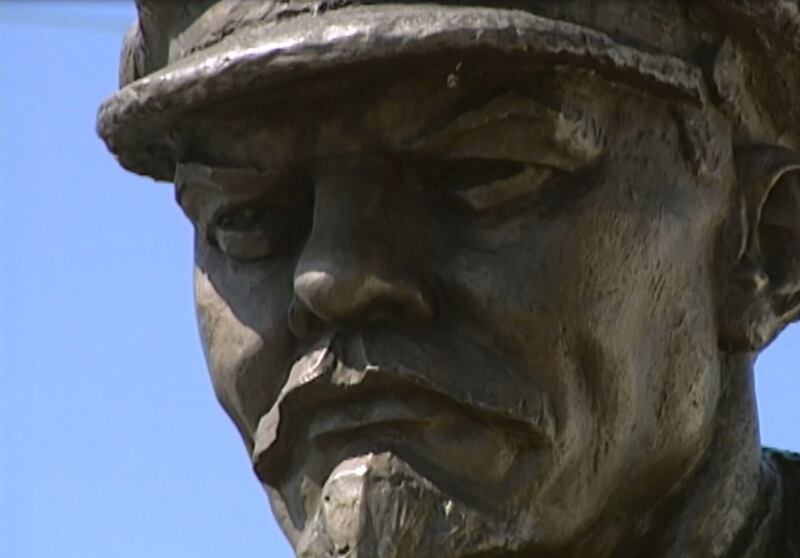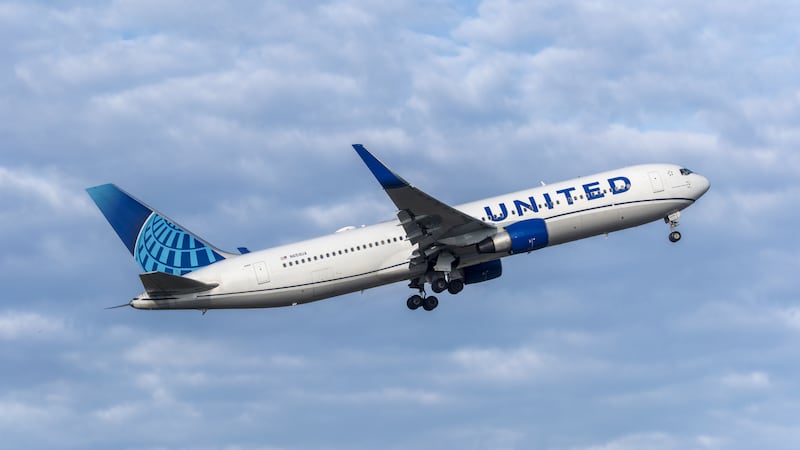UPDATE, FEB. 25, 2019: A new bill proposed by a group of 14 Republicans in the state Legislature would convene a work group to find a suitable replacement for Seattle's iconic Vladimir Lenin statue. Read the full story from KIRO Radio.
ORIGINAL TEXT: Protesters on Wednesday called for the removal of the Vladimir Lenin statue in Fremont -- one that has been in the neighborhood since 1995.
On Thursday, Mayor Ed Murray said he wants the statue removed, and also wants a Confederate monument removed from grave sites at Lake View Cemetery -- even though both are on private property.
That was a change in Murray's message from the day before. See details on Murray's statements in the Q and A below.
Some people think the Lenin statue is there as a joke. Some see it as an intriguing art piece in a neighborhood known for compelling statues. Others over the decades have called for removal saying the statue is a reminder of a dictator who was responsible for the death of thousands.
The latest controversy with the Lenin statue came after there were calls and a petition to remove the Confederate monument from private property at Lake View Cemetery on Capitol Hill. Follow this link to read read a Q and A about the Confederate monument in Seattle.
How did the Lenin statue get to Seattle? Here is a Q and A created with information from the King County Department of Assessments, archived Seattle Times articles, information from the KIRO 7 archives and HistoryLink.org.
Who was Lenin?
His full name was Vladimir Ilyich Ulyanov. He was known as Lenin. He lived from 1870 to 1924 and under his administration Russia became a communist state. He founded the Russian Communist Party and led the 1917 Bolshevik Revolution.
Opponents of Lenin's administration were suppressed in the Red Terror, a violent campaign administered by the state security services; tens of thousands were killed or interned in concentration camps, according to his Wikipedia page, which has extensive sources and additional reading. Lenin's administration defeated right and left-wing anti-Bolshevik armies in the Russian Civil War from 1917 to 1922 and oversaw the Polish-Soviet War of 1919–1921, the page states.
When was the statue created?
It was commissioned by the Communist Party of Czechoslovakia and installed in 1988 in the city of Poprad in the former Czechoslovakia. Poprad is now Slovakia.
Is it on private property?
Yes.
Who created the Lenin statue?
Emil Venkov, a Bulgarian sculptor, created the statue that was installed in Communist Russia in 1988. Venkov won a competition to create the statue – originally envisioned as a smaller statue -- in 1978. But years of city politics endured before it was created. Venkov was born in 1937 in Bulgaria and died in June 2017.
How big is it?
The Lenin statue is 16 feet and made of bronze. It weighs somewhere between 7 and 8.5 tons depending on the news report.
When was it removed from its original location?
1989 after the Communist Party was overthrown.
How did it get to Seattle?
Lewis Carpenter, an Issaquah native, found it in a Poprad scrap yard in 1993 and mortgaged his house for pay for the transport to the Northwest. Overall the project cost $40,000 to first bring it to Issaquah in 1993.
Carpenter owned a construction company and had an interest in Slovakia after building homes for Slovakian families in the Seattle area, according to a story about him in The Seattle Times. Carpenter planned to start a Slovakian restaurant in Issaquah and install it there. The city of Issaquah talked about installing it there as public art, but that plan was scrapped after residents objected.
Lewis Carpenter died in 1994 in a Stevens Pass car accident.
Shortly after his death, a home in Fremont became a reality. Peter Bevis, founder of Fremont Fine Arts Foundry, was called by another artist interesting in melting it. “I saw it there and thought what a wonderful piece,” he told The Times in 1995. “The way it was done, it was a picture of an intellectual standing into the future.”
The day of the first installation in Fremont, Bevis wore a button that read "Art outlives politics."
Jeannie Muir, a Fremont Chamber of Commerce member, told The Seattle Times in June 1995 that it was a phenomenal piece of history.
It was unveiled in its first location on June 3, 1995. But spring rains in 1996 weakened the foundation enough that another location needed to be found.
The Lenin statue was first in a parking lot two blocks south of the current location and in October 1996 moved to its current location at Fremont Place North and North 36th Street. Local businesses donated enough money to pay for the state of Lenin to be moved to its current location.
Who owns the statue?
The Carpenter family, which created a trust with the Fremont Chamber of Commerce. It’s been offered for sale since 1995. The initial asking price was $150,000, when the scrap value of the bronze was $30,000. In 2015, the asking price was $250,000 or best offer.
What is Seattle Mayor Ed Murray’s response to protests at the Lenin statue?
“You can look at the statue in two ways,” Murray told KIRO 7 on Wednesday. “It is a statue of a man who killed hundreds of millions of people. It’s also considered a joke. So is it a statue honoring him, or is it a statue actually making him into a joke? There are several different ways to look at it. I can see how some folks in the city, particularly from eastern Europe might find that Lenin statue not a joke, but perhaps something that should be removed.”
On Thursday, Murray called for the Lenin statue to come down. He is the first Seattle mayor to call for its removal.
“In the last few days, Seattleites have expressed concerns and frustration over symbols of hate, racism and violence that exist in our city," Murray said in a written statement through his spokesman, Benton Strong. "Not only do these kinds of symbols represent historic injustices, their existence causes pain among those who themselves or whose family members have been impacted by these atrocities.
"We should remove all these symbols, no matter what political affiliation may have been assigned to them in the decades since they were erected. This includes both confederate memorials and statues idolizing the founder of the authoritarian soviet regime. Both are on private property, but I believe the confederate memorial at Lake View Cemetery and the Lenin statue in Fremont should be removed. We should never forget our history, but we also should not idolize figures who have committed violent atrocities and sought to divide us based on who we are or where we came from.”
Have there been calls for it to come down before?
Multiple times.
In 1996, vandals hit the statue with shaving cream turning the face and crotch green.
Vandals hit it multiple times in 1995. In June 1995 it was splattered with paint.
When it was installed at its current location in 1996, the head of Seattle’s Polish Home Association, Marian Strutynski, told The Seattle Times that she was appalled and equated Lenin with Stalin and Hitler, saying Lenin represents the deaths of millions of people.
In 2015, vandals painted the statue hands red in protest of Lenin’s actions. And there have been other acts of vandalism, though the protesters on Wednesday did not damage the statue.
One notable call for removal was in 2001 when Matt Rosenberg, a Seattle writer and regular contributor to The Seattle Times opinion page, said the statue was unconscionable and illegal, and should be in the trash heap from which it was retrieved.
“Imagine a statue in Westlake Plaza of Hitler, who stoked ethnic and class hatred to inspire extermination of six million Jews. Unthinkable.” Rosenberg wrote in a Times column on July 4, 2001. “Yet, under the insidious, value-neutral rubric of "provocative art," Seattle proudly displays a larger-than-life sculpture of a man equally abhorrent.
“His focus on strict adherence to the bloody principles of revolutionary class war led to a vastly greater death toll than that of Hitler. There's much to the ugly truth about Vladimir Ilyich Lenin, whose likeness shamefully stands in a public square in Fremont.”
Rosenberg’s column brought support and opposition in letters to the Times. Among the people who disagreed was Robert Benish, a Lake Forest Park resident.
“Whenever I drive by Fremont's Lenin statue, I am reminded that it is a display of the very freedom that makes our country the greatest in the world and that to retain that freedom we must remain ever vigilant to preserve it from the attacks of those who would deprive us of it,” he wrote.
What sources did you use for this Q and A?
The King County Department of Assessments page for the property. KIRO 7 archive stories from September 5, 1991; June 3, 1995; July 16, 1995; Oct. 17, 1996; and Oct. 18, 1996. Seattle Times archive articles from June 1, 1995; Oct. 18, 1996; Dec. 7, 1996; July 4, 2001; July 9, 2001; April 12, 2015; June 11, 2017; Information from the HistoryLink.org thumbnail neighborhood history of Fremont and Vladimir Lenin's Wikipedia page also is included. Murray was interviewed Wednesday by KIRO 7 reporter Essex Porter.
TRENDING NOW:
- If you've gotten a robocall about a free cruise, you could get $900
- Man shot, drives self to hospital in bullet-riddled car with shattered window
- Why is a Confederate memorial in Seattle? A Q and A about its creation
- PHOTOS: Washington's missing children (Updated August 4, 2017)
- VIDEO: President Trump Says ‘Blame on Both Sides, I Wait for Facts’
Cox Media Group








